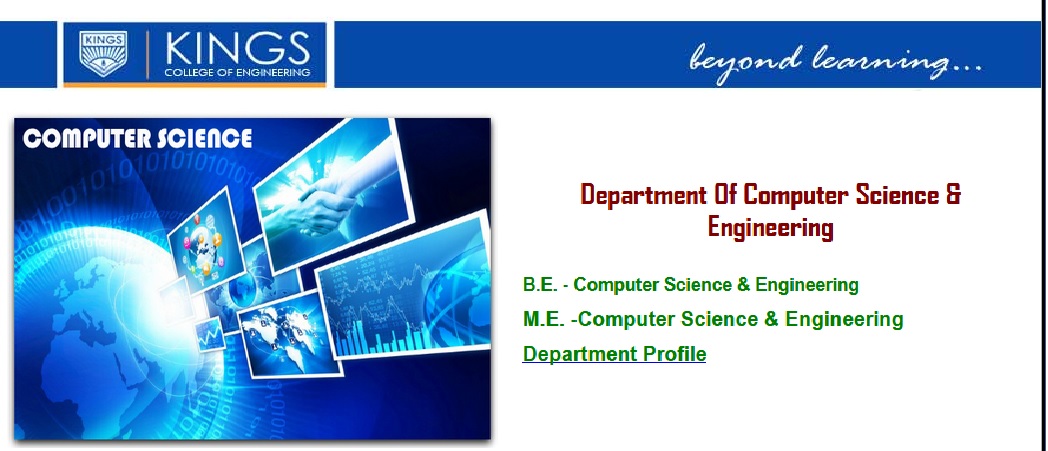CS1354 Graphics & Multimedia Question Bank : kings.ac.in
Name of the College : Kings College Of Engineering
Department : Computer Science & Engineering
Subject : Graphics & Multimedia
Website : kings.ac.in
Document Type : Question Bank
Download Model/Sample Question Paper : https://www.pdfquestion.in/uploads/ki…90-GM%20QB.pdf
Kings Graphics & Multimedia Question Paper
Unit – 1
Part-A :
1. What is the purpose of presentation graphics?
2. Define refresh buffer/frame buffer.
3. What is pixel?
Related : Kings College Of Engineering CS1352 Principles of Compiler Design Question Bank : www.pdfquestion.in/288.html
4. Define aspect ratio.
5. What is Output Primitive?
6. What is DDA?
7. What are the disadvantages of DDA algorithm?
8. What is attribute parameter?
9. What are the basic line attributes?
10. What is meant by aliasing?

11. Define Rotation.
12. Define Reflection.
13. Define Shear.
14. Define Window.
15. Define view port.
16. What is viewing transformation?
17. Define Clipping.
18. What are the types of Clipping?
Part-B :
1. Write and explain the DDA algorithm for line generation
2. Describe the Bresenham’s line drawing algorithm with suitable example.
3. Explain the steps in midpoint circle drawing algorithm
4. Explain the steps in midpoint ellipse drawing algorithm.
5. Explain Two Dimensional transformations and viewing
6. What is polygon clipping? Explain Sutherland-Hodgeman algorithm for polygon clipping.
7. Explain Cohen-Sutherland Clipping.
8. Explain in detail Liang-Barsky line clipping algorithm.
Unit – 2
Part-A :
1. Categorize the 3D representations?
2. What Boundary representation?
3. What space-partitioning representation?
4. What is Blobby Object?
5. What is projection?
6. What are the types of projection?
7. What is parallel projection?
8. What is Perspective projection?
9. What is chromaticity?
10. Define Color model.
11. What is HSV model?
12. What for CMY color model used?
13. What are the parameters in the HLS color model?
14. Define Computer animation.
15. How frame-by-frame animation works?
16. What is morphing?
17. What are the methods of motion specifications?
Part-B :
1. Explain 3D basic transformation with an example
2. Design a storyboard layout and accompanying key frames for an animation of a single polyhedron.
3. How to specify objects motion in an animation system.
4. Derive the 3D transformation matrix for rotation about
(i) an arbitrary axis
(ii) an arbitrary plane
5. Explain RGB, CMY, YIQ and YUV color models.
6. Brief about select function and shut down functions.
7. Explain the properties of B spline. How it is differ from Bezier?
8. How to represent an object on 3D scene?
9. Explain three dimensional geometric and modeling transformations.
10. Explain three dimensional Viewing and Functions.
11. Draw the CIE chromaticity diagram and explain.
12. Explain different types of color model in detail.
Unit – 3
Part-A :
1. Give some Multimedia applications.
2. What are the multimedia elements?
3. What is Holography?
4. What is hologram?
5. What are the important processes in image processing?
6. What are complex image enhancement capabilities?
7. What is VGA mixing?
8. What is Dual-buffered VGA mixing / scaling?
9. What is hypermedia documents?
10. What are the sub-systems in DSP?
11. What are the types of images based on multimedia?
12. What does non-visible images refer?
13. What are abstract images?
14. What is DVI?
15. What is MIDI?
16. What is Apple\’s Quick time?
17. What is JPEG?
18. What is called Asymmetrical compression based on Compression?
19. What are the considerations in Multimedia storage?
20. What are the strengths of object oriented s/w?
Part-B :
1. Explain list of Multimedia applications. Explain them briefly.
2. Briefly discuss the history and future of Multimedia.
3. Explain the characteristics of MDBMS.
4. Write short notes on multimedia system architecture
5. What is multimedia? Explain the properties of multimedia systems.
6. Explain the data stream characteristics for continuous media.
7. Explain the different file formats used in multimedia.
8. Suggests with reasons 5 potential applications of multimedia other than the applications in the field of entertainment and education.
9. Explain various multimedia interface standards
10. Describe various building block of multimedia system.
11. Write short notes on MDBMS
12. Explain Database Organization for Multimedia Applications.
13. Explain 3-D Technology and Holography.
14. Explain hypermedia and its functions.
15. Short notes on Multimedia databases.